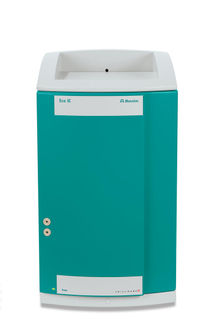To use all functions of this page, please activate cookies in your browser.
my.chemeurope.com
With an accout for my.chemeurope.com you can always see everything at a glance – and you can configure your own website and individual newsletter.
- My watch list
- My saved searches
- My saved topics
- My newsletter
Polygonum pensylvanicum
Polygonum pensylvanicum L. of the buckwheat family is also known as Pinkweed, Pink Knotweed, Smartweed, and Pennsylvania Smartweed.[1] Pennsylvania smartweed is an erect or sprawling annual, 1 to 5 feet tall. The leaves are lance-shaped and are connected at the node by a membranous sheath, or ocrea. The ocrea is not fringed. The plant flowers July to November. The flowers are rose-pink (or white) and are found in crowded, elongate clusters. Flower stalks often have minute glandular hairs near top, but this is highly variable. The seeds are small, and a shiny brown and encased in achenes. The achenes are elliptical to circular and are a glossy black. Product highlight
Cultivation and usesPennsylvania smartweed grows in waste ground and crops. It can tolerate many different conditions, but prefers moist soils. It can be found throughout eastern and central North America. American Indians used tea made from whole plant for diarrhea and poulticed leaves for piles. Bitter leaf tea has been used to stop bleeding from mouth. The tops were used in a tea for epilepsy. Note that the fresh juice is acrid and may cause irritation. The plant is native to eastern North America. The nectar is useful to insects, the many large seeds to songbirds and wildfowl and the leaves to several kinds of moths and butterflies. Synonyms
NotesReferences
|
|||||||||||||||||||||
| This article is licensed under the GNU Free Documentation License. It uses material from the Wikipedia article "Polygonum_pensylvanicum". A list of authors is available in Wikipedia. |







